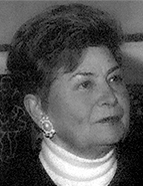

Qualified as a Museum Curator, she applied for the position of Curator from March to October 1954. When she was dismissed from university teaching in March 1958, she rejoined the Lisbon Municipal Museums (City Museum, Rafael Bordalo Pinheiro Museum, Antoniano Museum) as a 1st Class Curator, rising to the rank of Chief Curator of Municipal Museums in a public competition in 1970.
Meanwhile, she combined her work as a museologist with a renewed interest in archaeology, now focused on the city of Lisbon and its surroundings, a field that aroused her particular interest and in which she was a pioneer. She began by conducting prospecting and surveys at the Neolithic site of Vila Pouca, in the Serra de Monsanto, in 1959. However, the work that brought her the most notoriety was her archaeological intervention in the remains of the Royal Hospital of Todos-os-Santos in Praça da Figueira, at the invitation of the mayor, during the excavations of the Rossio Metro Station in Lisbon, which the municipality entrusted to her. This excavation was “a milestone in the history of archaeology, constituting the first major action to safeguard urban archaeological heritage” (“Margarida Almeida Bastos and Rita Fragoso de Almeida, Museu de Lisboa, Irisalva Moita um percurso fotobiográfico” p. 111). She herself stated that it was “the first medieval urban excavation within the city (...) because at that time only the Roman period was of interest”. (Interview, p. 139). She wrote five reports on the work carried out, which were published in the Revista Municipal between 1964 and 1966, under the title “Hospital Real de Todos-os-Santos – Report on the excavations ordered by the Municipal Council: from 22 August to 24 September 1960”, accompanied by a photographic report In this context, a Roman necropolis, used between the 1st and 3rd centuries, was also discovered in Praça da Figueira, which she monitored and reported on. This discovery alerted her to the possibility of further traces of Roman presence in the city, which was confirmed, for example, by the appearance of two graves with bones and coins in Olivais-Sul in 1964 and an amphora in Beco dos Armazéns do Linho in 1967. These and other findings alerted her to the remains that were being discovered when holes were dug for the construction of buildings, which she kept an eye on until the end of her life.
This work is financed by national funds through FCT - Foundation for Science and Technology, I.P, in the scope of the projects UIDB/04311/2020 and UIDP/04311/2020.
